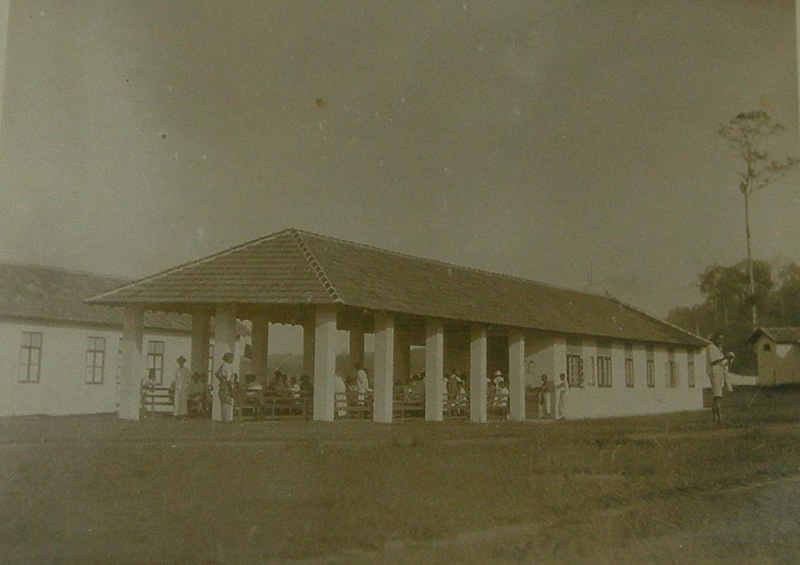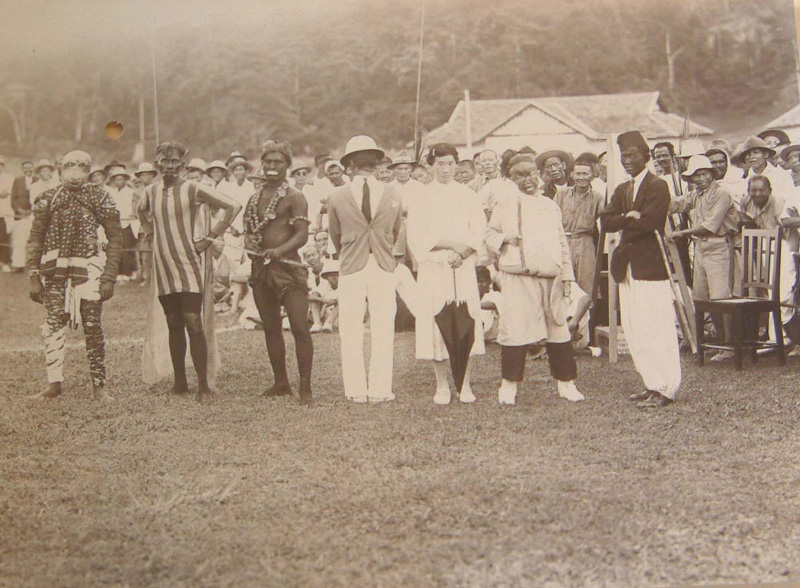Histor Of Leprosy Sungai Buloh
The carnival which among others wants to show the public that it is safe to be around former leprosy patients will be held on Dec 8 and 9 at the Sungai Buloh Leprosy Settlement. From 1959 to 1976 Sungai Buloh and its Research Unit made its full impact in the field of international leprosy research.

Sungai Buloh Malaysia International Leprosy Association History Of Leprosy
Sasakawa Health Foundation will introduce the initiatives for the Preservation of Leprosy History in Malaysia amid the Coronavirus Pandemic.

Histor of leprosy sungai buloh. The Culion Island Settlement in the Philippines with its population of around 6000 established some 20 years earlier was certainly the largest in the world but Sungai Buloh was the most impressive because of its. Ninety years ago in Selangor Malaysia a lush valley known as Sungai Buloh was transformed into a home for leprosy patients. Stories often focus on the positive spirit of leprosy survivors in order to reframe the common perspective that people may have about leprosy.
For them living for many years in the settlement hailed as a modern feat of engineering when it was first built the experience has largely been shaped by their exclusion from society as a frightful health threat and the spatial. When the genome was mapped in 1993 scientists discovered that it had shed all but the bare necessities for its metabolism and it continued to survive. The Sungai Buloh Settlement is the second largest leprosarium in the world.
The Sungai Buloh Settlement is located on the outskirts of Kuala Lumpur the capital of Malaysia. Sungai Buloh Malaysia Sungai Buloh settlement 1932. The genome of M.
Much of the clinical work was carried out in Sungai Buloh while the laboratories of the Institute of Medical Research in London provided the facilities for the experimental and academic part of the projects. In 1930 in an isolated valley of Bukit Lagong Sungai Buloh a group of Malays Chinese Indians Eurasians and Turks set up a contained community in the wake of the 1926 Leper Enactment Act which required the segregation and treatment of those with the disease. It has been established in 1930 and its historic value of the site was recognised.
The transfer of non-opium smoking patients from the Leper Asylum in Kuala Lumpur off. It is hoped that through a series of old photographs with simple descriptions and together with the oral. Kasura according to locals some of the immigrants that are there are also leprosy patients as sungai buloh is the 2nd largest leprosy centre in the world so patients comes from all parts of Malaysia when they were diagnosed with leprosy local or not.
A few weeks ago I took an excursion to visit Mr Lee Chor Seng an old friend leprosy-recovered patient and five-decade resident at the Sungai Buloh Leprosy Settlement SBLS. It probably originated in eastern Africa more than 100000 years ago. And what I find an eyesore is the construction progress of UiTM by construction workers with their huge cranes.
Story Gallery of Sungai Buloh Malaysia. He was amazed to see just how well every detail meets the criteria including the ideal choice of site for agricultural activities the establishment of a main administration building with hospital and medical facilities and so on. The settlement is situated 256 km from Kuala Lumpur.
Sungai Buloh was at one point the second biggest leprosy settlement in the world. Programmes include photo and floral exhibitions a documentary screening on the history of the settlement a youth camp and a drawing competition for children. Ean Nee Tan and Joshua Wong have produced a beautiful collection of stories developed from interviews with people who lived in Sungai Buloh Leprosy Settlement just outside Kuala Lumpur in Malaysia.
In memory of the role of this place the Valley of Hope museum was envisioned and built to preserve the rich history of the lepers in the country. Space Taboos and Memories of Sungai Buloh Leprosy Settlement. The Sungai Buloh Oral History team was formed to collect and record the stories recounted by leprosy survivors.
Leprae the mycobacterium that causes leprosy is ancient. Lee said it was Dr KM Reddy the director and head of the Sungai Buloh Leprosy Centre in 1957 who introduced gardening to the patients in the 1960s. Leprosy has been present since earliest times.
When the new settlement at Sungai Buloh was officially opened in 1930 it was practically the largest and most modern leprosarium in the British Commonwealth. Deputy Director National Leprosy Control Centre Malaysia. The Isolated Emotional World of Former Leprosy Patients and Their Descendants translated by Khor Jiak Ling Malaysia.
It was officially opened on 16th August 1930. Up to 12 cash back Compulsory segregation defines the self-identity of the ex-patient residents of Sungai Buloh Leprosy Settlement in Malaysia. Specifically catered for those suffering from leprosy which at that time was considered an incurable disease the centre in Sungai Buloh was the second largest leprosarium in the world.
Surprisingly the Sungai Buloh leprosy settlement has marked a very significant stage in Malaysian history in relation to medicine planning architecture and. Picture by Hari Anggara Reminiscing about the past Lee said Dr Reddy was determined to connect the secluded leprosy patients in the settlement and society at large who feared the bacterial disease leading. Despite his leprosy-induced disfigurement and immobility Chor Seng has always been a keen observer of current affairs inside and outside the settlement and thus a good interlocutor.
Covering an area of 562 acres the Valley of Hope as it is. The construction work to build the Sungai Buloh Settlement started in 1926 and subsequently officially opened in 1930. It catered specifically for those suffering from leprosy which at that time was considered an incurable disease.
In January 1926 when world-renowned Brazilian leprosy expert Dr Souza Araujo came to Malaya he was impressed with the policy of Sungai Buloh Settlement. Up to 12 cash back Heritage movement Preservation discourse Sungai Buloh leprosy settlement Colonial medicine Oral history Destigmatisation This is a preview of subscription content log in to check access. When the new Settlement at Sungai Buloh was officially opened in 1930 it was practically the largest and most modern leprosarium in the British Commonwealth.
Loke Seng Kah now 67 years old was born in the Sungai Buloh Settlement in 1949. This pictorial history book is aimed at capturing the history of the leprosy patients who were forced to be isolated in the Sungai Buloh settlement. The Sungai Buloh Leprosarium has been known as one of the exceptional models in the liberation of leprosy institutions in the 20th century and also one of best treatment centers for leprosy.
It is also seen as a small success of the effort of The Way Home oral history collection team over the past four years. A map of Sungai Buloh created by a leprosy patient Haji Othman. Shared Metaphors Between Lepers and the May Thirteenth Victims By Por Heong Hong A few weeks ago I took an excursion to visit Mr Lee Chor Seng who is an old friend a leprosy recovered patient and a five-decade resident at Sungai Buloh Leprosy Settlement SBLS while traveling to a nearby area.
The Culion Island Settlement in the Philippines with its population of around 6000 established some 20 years earlier was certainly the largest in the world but. Leprosy may be a far from common desease nowadays but Sungai Buloh was once home to the second largest leprosy settlement in the world. Council Member Sungai Buloh Settlement Council Malaysia.
On top of this the Sungai Buloh Leprosarium was also one of the key leprosy research center in the globe where some of its research trials and experiments have greatly contributed to the. Both of his parents are leprosy patients and he is their eldest son with five younger siblings after him.
A Museum To Showcase The Stories Of Sungai Buloh S Leprosy Survivors Hakam


Komentar
Posting Komentar